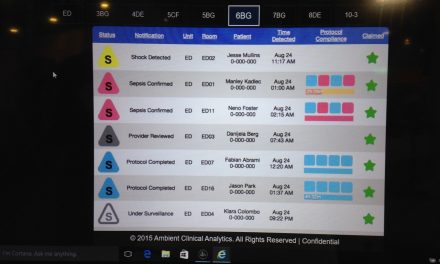A public meeting on Converged Communications and Healthcare Devices Impact on Regulation (see here) was convened by the FDA and FCC on July 26-27, 2010. The major topics addressed by panels were (1) Current State of Wireless Health & Lessons Learned, (2) Innovator Perspective, (3) Healthcare Provider, Clinician & Patient perspective, (4) Investor and Research & Development perspective, (5) Reliability - How to Define Quality of Service, and (6) Electromagnetic Compatibility - How to Promote EMC. A complete transcript of the meeting will be forthcoming at the conference link given above, or at www.regulations.gov using the docket number FDA-2010-N-0291. The docket folder currently includes about 35 written comments made in advance of the meeting including from concerned citizens, professionals and professional groups, and major medical device and communications companies.
The stated motivation for this meeting included concern for the proliferation of devices using radio technology as well as reliance on consumer grade communication devices. In part this reflects potentially overlapping regulatory areas with the FCC on the spectrum side and the FDA on the medical device side. In addition to the usual array of medical device performance issues, the radio arena presents the additional challenges of the shared spectrum space, and the suitability of general purpose devices and systems for medical applications.
The major questions addressed at the meeting included data integrity and reliability, medical device and system security issues, allocated and unlicensed spectrum utilization, joint regulatory requirements, and risk management. The latter included the need to define levels of device criticality (which may then correspond to device FDA classification), and potential performance issues in multiple environments.
The FDA and FCC issued an associated joint press release (here) in which they reiterated the generally held belief that innovations in medical device communication "holds significant promise for enhancing health and reducing cost." They further reiterated that these applications require agencies to assure that such devices operate in a safe, reliable and secure manner, while also encouraging innovation and affording the public the potential benefit of such devices. In part this will benefit from clarity and predictability with respect to the regulations as the agencies fulfill their mandate to protect the public from unsound devices and/or unsound device performance. In this regard it is certainly a challenge to the FDA to both tighten regulations (e.g. with respect to infusion pumps, and likely with respect to the 510(k) process), while also trying to be pro innovation.
Two issues that will have to be resolved here, and for some wired applications as well, are distinguishing real medical devices from health related toys, and where an integrated and regulated medical device ends and a less regulated general purpose communications or computer network begins. The commercial health toy arena has a strong element of regulatory avoidance, which might be acceptable with clear and honest marketing, and some way to exclude date from such devices from being confused with actual medical device data. It should also be clear that a medical device performing a critical function cannot operate at the whims of smart phone and internet performance when we have ample demonstration that these systems are not in fact reliable. Being unable to make a simple phone call, blog or text is one thing while being unable to send important information to a healthcare provider, who is in turn relying on being able to receive such information, is quite another.




UPDATE
After the preparation of the above post, the FDA released preliminary results of its internal review of the 510(k) process. While these results do not speak directly to communicating medical devices, changes in the 510(k) process, when they are actually forthcoming, will effect FDA Class II devices, and therefore perhaps some that communicate.
The FDA material can be found at:
http://www.fda.gov/AboutFDA/CentersOffices/CDRH/CDRHReports/ucm220272.htm
Post meeting details from the July 26-27, 2010 FCC/FDA Joint Meeting on Life Saving Wireless Medical Technology have been posted on line including a video replay (look for date at http://reboot.fcc.gov/video-archives), PowerPoint presentations, and a word-for-word transcript. See: http://reboot.fcc.gov/workshops/fcc-fda-joint-meeting-on-life-saving-wireless-medical-technology.
P.S. Does it make perfect sense that the FCC would have such a nice archive?